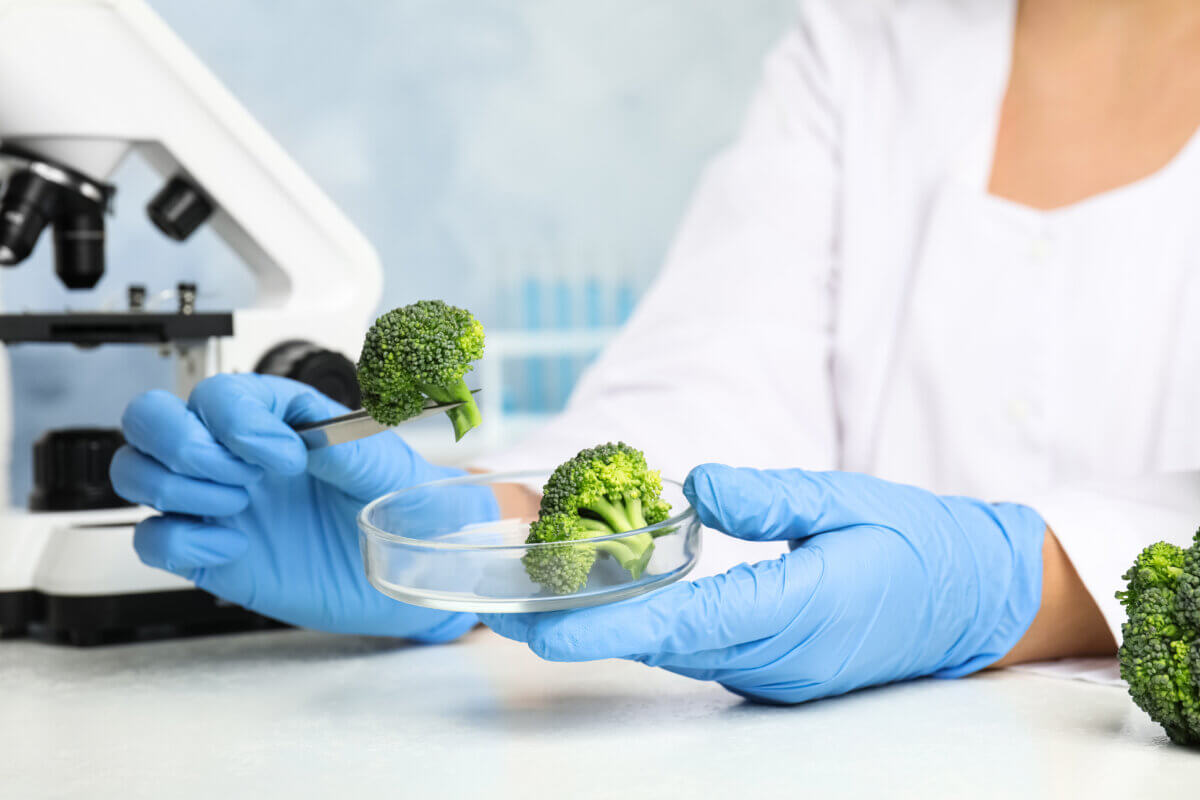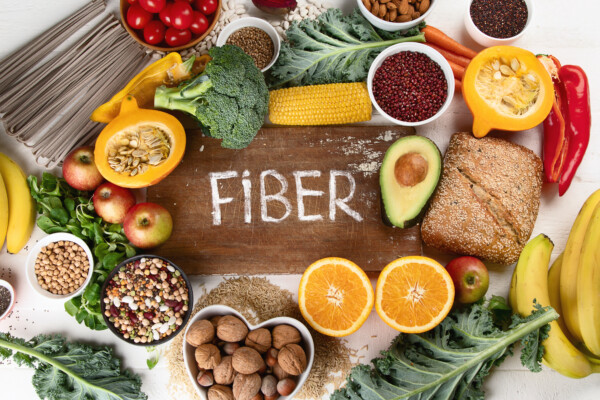
(Photo by New Africa on Shutterstock)
HUNAN, China — Scientists have long known that broccoli packs a powerful nutritional punch, but new research is shedding light on exactly how this humble vegetable produces its cancer-fighting compounds. A team of researchers in China has sequenced the genome of broccoli at an unprecedented level of detail, uncovering the genetic secrets behind its ability to produce glucosinolates - the compounds responsible for broccoli's health benefits and distinctive flavor.
The research provides an incredible new window into how broccoli produces its health-promoting compounds at the genetic level. Scientists have essentially created a high-resolution map of broccoli's genome that allows us to pinpoint the genes responsible for glucosinolate production.
Study authors say their paper, published in the journal Horticulture Research, provides the most comprehensive look yet at broccoli's genetic makeup. By mapping out the vegetable's DNA with cutting-edge sequencing technology, the researchers were able to identify key genes involved in producing glucosinolates, particularly a compound called glucoraphanin. When broccoli is chopped or chewed, glucoraphanin is converted to sulforaphane, a potent anti-cancer molecule that has been shown to reduce the risk of various types of cancer.
The findings open up exciting possibilities for breeding even more nutritious varieties of broccoli and related vegetables like cauliflower and cabbage. By understanding the genes that control glucosinolate levels, scientists may be able to develop new broccoli cultivars with enhanced cancer-fighting properties.
Beyond just broccoli, the study provides broader insights into the evolution and diversity of the entire Brassica family of vegetables. The researchers compared the broccoli genome to those of related plants, shedding light on how these nutritious crops diverged over millions of years of evolution.
Cracking the Genetic Code
To conduct their analysis, the researchers used a combination of cutting-edge DNA sequencing technologies to assemble a highly accurate map of the broccoli genome. They employed long-read sequencing using PacBio technology, which can read very long stretches of DNA at once. This was complemented by Hi-C sequencing, a technique that captures the three-dimensional structure of chromosomes.
Together, these methods allowed the team to assemble the broccoli genome into nine chromosome-scale sequences totaling about 614 million DNA base pairs. This represents over 93% of the estimated total genome size, making it the most complete broccoli genome assembly to date.
With this high-quality genome in hand, the researchers were able to identify and analyze the genes involved in glucosinolate production. They found multiple copies of key genes, reflecting past genome duplication events in the evolutionary history of broccoli and its relatives.
Of particular interest were genes in the MAM family, which are involved in the early steps of glucosinolate synthesis. The researchers identified six MAM genes in broccoli, compared to just three in the related plant Arabidopsis thaliana. This expansion of MAM genes likely contributes to broccoli's ability to produce high levels of health-promoting glucosinolates.
The study went beyond just cataloging genes to examine how they function. The researchers analyzed gene expression patterns across different broccoli tissues and growth stages. They found that many glucosinolate-related genes were highly expressed in the roots during early growth stages.
This suggests that broccoli roots may be a key site of glucosinolate production early in the plant's life. The compounds are then likely transported to other parts of the plant, including the edible florets.
The team also conducted a detailed analysis of the MAM1 gene, which is crucial for producing glucoraphanin - the precursor to sulforaphane. They found that broccoli has a particularly active version of this gene compared to some related vegetables. This may help explain why broccoli is especially rich in glucoraphanin.
To confirm the importance of MAM1, the researchers created transgenic broccoli plants that overexpressed this gene. These plants showed significantly higher levels of glucoraphanin and related compounds compared to normal broccoli. This provides strong evidence that MAM1 is indeed a key player in broccoli's nutritional prowess.
Methodology
The researchers employed a multi-pronged approach to analyze the broccoli genome:
- DNA Sequencing: They used PacBio HiFi sequencing to generate long, highly accurate DNA reads. This was complemented by Illumina short-read sequencing for additional coverage.
- Genome Assembly: The sequencing data was assembled into contiguous sequences using specialized software tools. Hi-C data was then used to organize these sequences into chromosome-scale scaffolds.
- Gene Prediction: The researchers used a combination of computational predictions and RNA sequencing data to identify genes within the assembled genome.
- Comparative Analysis: The broccoli genome was compared to those of related plants to study evolutionary relationships and gene family expansions.
- Gene Expression Analysis: RNA sequencing was performed on various broccoli tissues to examine when and where different genes are active.
- Functional Validation: Key genes like MAM1 were further studied through overexpression experiments in transgenic plants.
Key Results
The study yielded several important findings:
- A high-quality broccoli genome assembly covering over 93% of the estimated genome size.
- Identification of 55,958 protein-coding genes, including multiple copies of key glucosinolate biosynthesis genes.
- Evidence that the roots are a major site of early glucosinolate production in broccoli.
- Confirmation that the MAM1 gene is crucial for glucoraphanin production, with overexpression leading to higher levels.
- Insights into the evolutionary history of broccoli and related Brassica crops.
- Identification of potential transcription factors that may regulate glucosinolate biosynthesis.
Limitations
While the study provides valuable insights, there are some limitations to consider:
- The research focused on a single broccoli variety. There may be genetic variations in other cultivars that weren't captured.
- The functional studies were primarily conducted in controlled laboratory conditions. Field studies would be needed to confirm the results in real-world growing conditions.
- While the genome assembly is highly complete, there are still some gaps and unresolved regions.
- The study focused mainly on glucosinolate biosynthesis. Other aspects of broccoli biology and nutrition weren't examined in as much detail.
- The transgenic experiments demonstrate the importance of MAM1, but more work is needed to fully understand how modifying this gene might affect overall plant growth and development.
Discussion and Takeaways
This comprehensive analysis of the broccoli genome provides a wealth of new information that could have far-reaching implications for both science and agriculture.
For plant biologists, the study offers a detailed look at how complex biosynthetic pathways like glucosinolate production evolve and diversify. The expansion of key gene families in broccoli compared to related plants highlights how genome duplication events can lead to new traits and adaptations.
From an agricultural perspective, the findings open up new avenues for crop improvement. By identifying the genes most crucial for glucosinolate production, breeders may be able to develop new broccoli varieties with enhanced nutritional profiles. This could lead to vegetables with even greater cancer-fighting potential.
The research also underscores the importance of studying crop genomes in detail. While broccoli has been cultivated for centuries, we're still uncovering new secrets about its biology. This highlights the value of applying cutting-edge genomic technologies to even well-known crop plants.
Beyond broccoli, the study provides tools and approaches that could be applied to other members of the Brassica family. This could lead to nutritional improvements in related crops like cauliflower, cabbage, and Brussels sprouts.
As the study shows, a simple head of broccoli represents millions of years of evolution and a finely tuned network of genes working together to produce beneficial compounds. It's a testament to how modern genomic research can shed new light on familiar foods, potentially leading to improvements that benefit human health.










